A Fashion Event’s Still Life
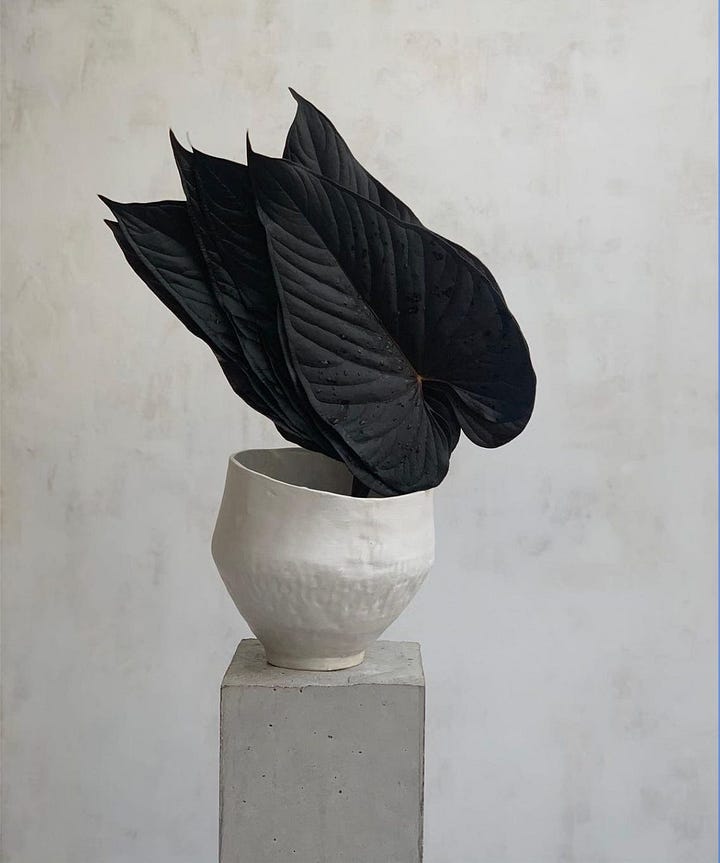
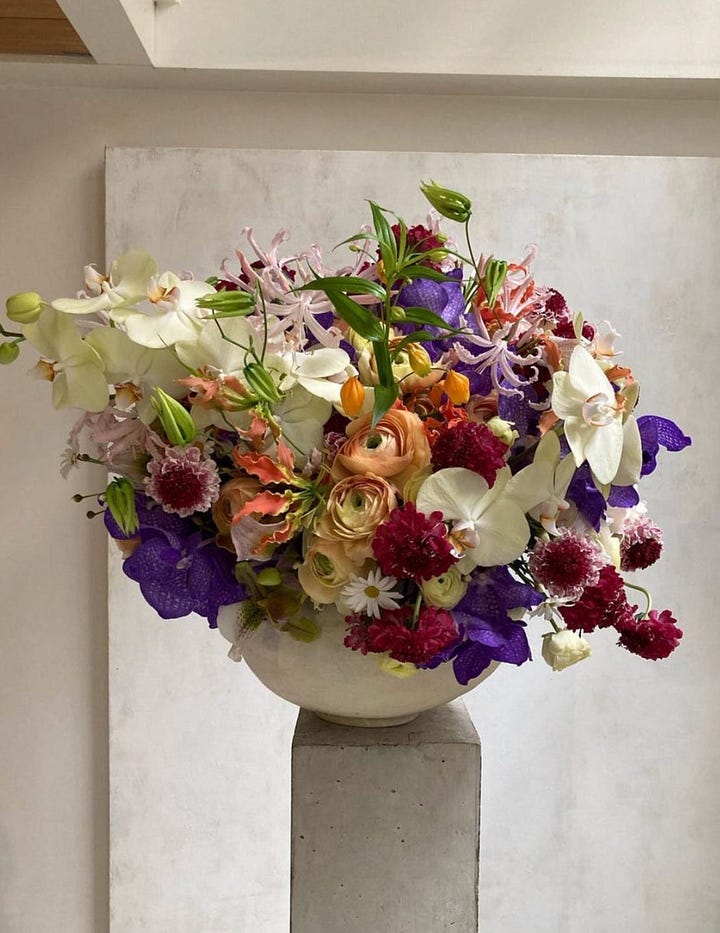
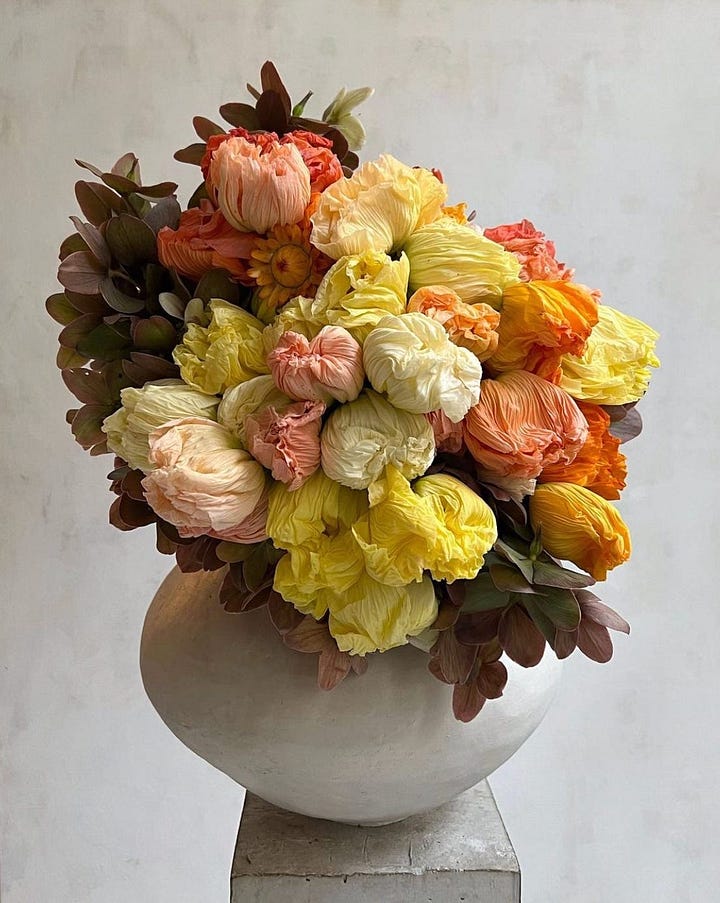
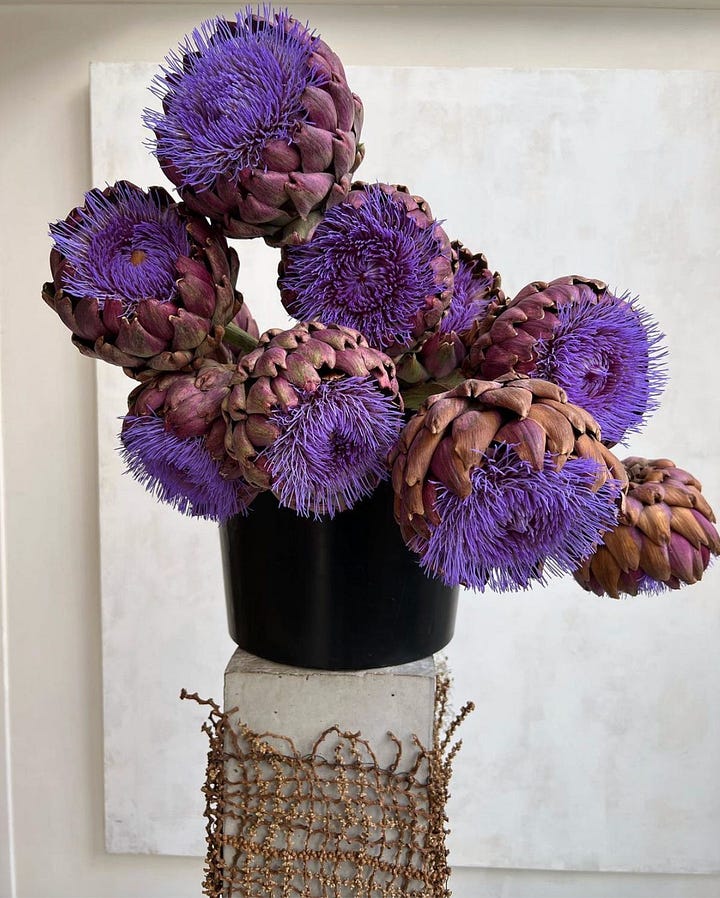
EYES ON: Louis-Géraud Castor’s Floral Arrangements
Louis-Géraud Castor, the fashion house darling of florists, elevates the art of flower arranging to high art. Through the simple assembly of each stem, Castor’s work draws on some of the biggest themes in the history of art — from colour theory to weight in sculpture.
Way more than your run-of-the-mill flower bouquets at a fashion event, the arrangements ask us to look past the objects, past what we know about them, to view them in an entirely new and elevated light.
WHY WE’RE WATCHING:
How can such everyday objects evoke such sublime and serene sensations?
The very same question has been asked countless times of still life paintings. The crude answer: composition over content. And that’s exactly how Castor treats his flower-subjects.
In each arrangement, the flowers are reduced to the simple combinations of their shape and colour. And so, in encouraging us all to look at the everyday in this way, Castor’s work encourages us to view even the contents of our fridges as art.
A River That Wasn’t
EYES ON: Robert Hodgin’s Meander
Robert Hodgin is a digital artist from NYC who started the design and technology studio Rare Volume. Inspired by a map of the Mississippi River from 1944, his project, Meander, is a procedural system for generating historical maps of rivers. But unlike most maps that translate real space, these rivers never existed.
Capturing the ‘universal’ river (with even the map’s geographic names generated randomly), Meander uses code to simulate how a river shapes a placeless landscape over time. Periodically ebbing and flowing, rivers pick up bits of their bed and deposit them downstream. Occurring at a pace that makes this process unnoticeable, Hodgin reduces this activity of change to a curved line on paper. This line, meandering through oscillations, drastically shapes the imaginary land.
WHY WE’RE WATCHING:
Reminiscent of Grayson Perry’s Map of An Englishman, Hodgin’s fictional map holds up a mirror to a greater truth, one that’s not geographical but metaphysical. Hodgin’s use of code to represent all time (every stage of the river all at once) shares in the long history of cartographers abstracting time and space to uncover an unseen truth about a place.
Old cartography is by no means a new point of inspiration; many artists are drawn to how people have come to comprehend their surroundings and grapple with their newness by depicting it. In selecting to show certain details and leaving others out, maps trace landscapes of their creator’s imagination.
Hodgin’s map of the river, although only ever existing in his mind, tells the much larger story of geological time.
The Topsy Turvy Ballgown

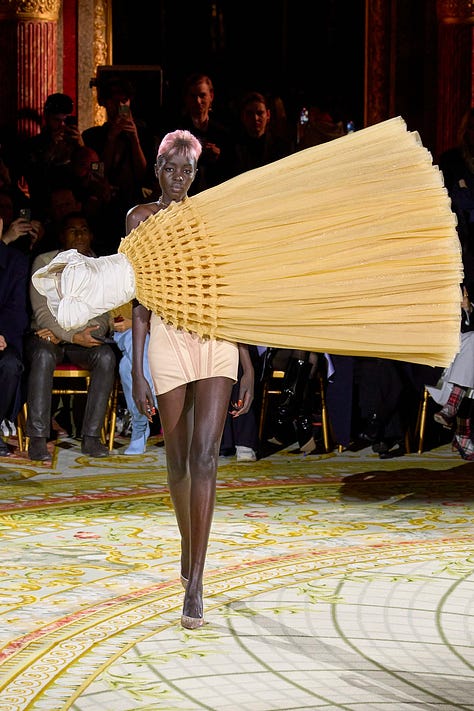


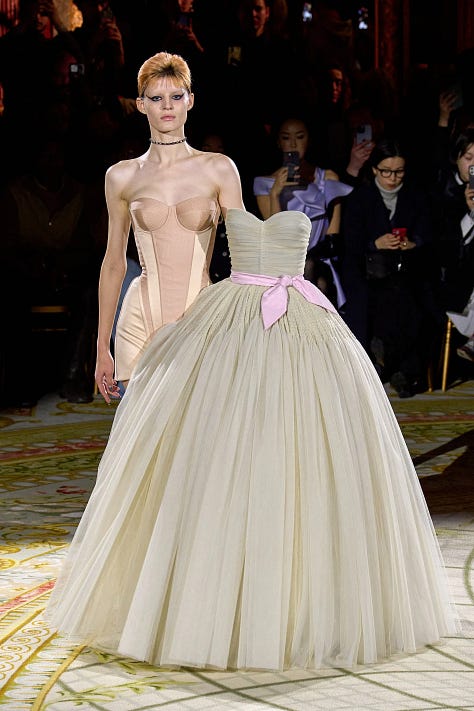
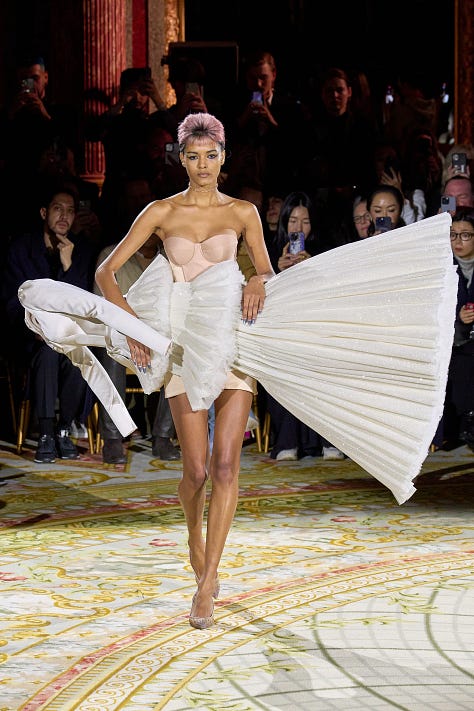
EYES ON: Victor and Rolf’s SS23 couture show
Couture collections have intrinsic signallers: luxury, wealth, fantasy, glamour. So when stereotypically pouffy ballgowns, comically misplaced on their models’ bodies, came strutting down Victor and Rolf’s SS23 runway, those connotations were brought under the microscope.
Describing the intention of their show, Victor and Rolf detailed their aim to tip traditionalist views on couture quite literally on their head. Through the act of rotation that left these body-less dresses in jarring positions, the collection follows in the footsteps of the surrealists. Confusing contexts to make useless the useful and strange the familiar — the ballgown we all know is made to be absurd.
WHY WE’RE WATCHING:
Perhaps more interesting to us than the collection’s surrealist threads is Victor and Rolf’s allusion to their collection’s roots in digital image culture.
“There was a comment here about internet culture and how consuming visuals on our phones — snapping photographs and immediately being able to invert them, using filters to distort and enhance our silhouettes and bone structure — has warped our sense of reality. There is a disconnect between what we see, and the physicality of the product.” - Rolf Snoeren (of Victor and Rolf)
Here, these inverted dresses are likened to mis-edited images. Cut and pasted onto the wrong place, the dresses shine a light on the untrustworthiness of the digital images populating our feeds.
Take one gown from this collection; when viewed head-on, it looked at home in any fairytale. But, when the model shifted directions, it was revealed that the gown’s skirt was in fact 10 cm out from the model’s body, hanging lifelessly in the air.
Through this shock realisation, the clothes call out a message: perspective shapes everything.
WHOSE EYES: Isabella Sainty, Brand @ DRAUP







